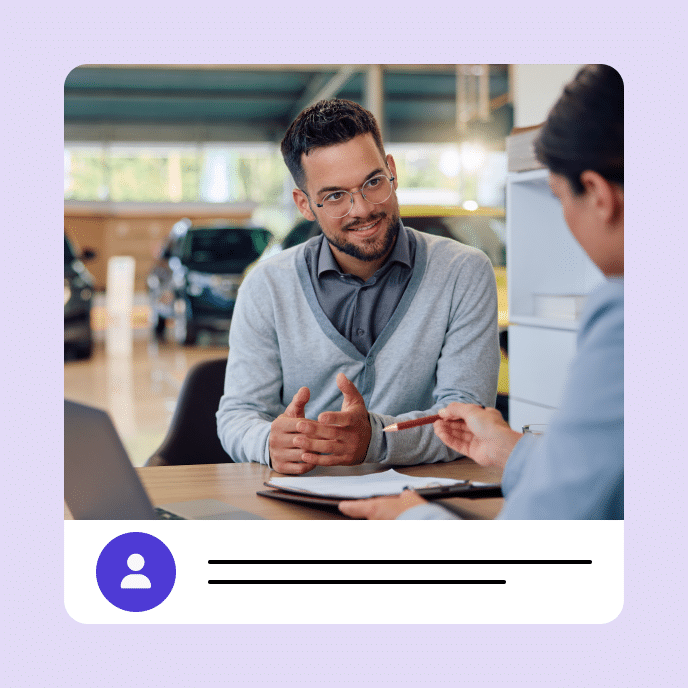What Is E-Learning?
Discover everything you need to know about e-learning—including how to maximize its benefits with the right tools and software.

Introduction: The rising demand for e-learning
Whether you want to acquire new skills or are looking to train your team, e-learning is one of the most important strategies on the market. And year after year, its predominance grows. By 2026, the global e-learning market is projected to value nearly 400 billion USD—twice the size it was in 2019.
Highly flexible, convenient, and accessible, e-learning offers key advantages that reflect the values of learners today. Both businesses and educational institutions must leverage e-learning in the right ways to effectively transform skill sets and deliver true results.
Looking for an overview of types of e-learning, or strategies you can apply to your own business? It’s safe to say Articulate knows a thing or two about e-learning. In this article, we’ll cover the full rundown on e-learning, including ways to maximize its benefits with the right strategies and software tools.
What is e-learning?

E-learning, or electronic learning, is an educational format where distribution happens via the internet. While the term was coined only a few decades ago, e-learning is no longer a new phenomenon—and it’s certainly not a passing trend. For many institutions, it’s the primary method for delivering educational content thanks to its speed, ease of use, flexibility, and affordability.
A variety of terms are used synonymously with e-learning, including online learning, digital learning, online education, online training, and virtual learning.
What are the benefits of e-learning?
E-learning’s rising dominance can be attributed to its key advantages—particularly its flexibility, speed, accessibility, and scalability. Below, we’ll dive into seven primary benefits of e-learning in more detail.
1. E-learning is flexible
One of the central reasons educators and learners turn to virtual training? Its inherent flexibility. Because training takes place online, learners can tune in from any location and from any time zone as long as they have access to the internet. This results in increased participation and an improved learner experience.
As today’s workforce becomes increasingly globalized, e-learning’s flexibility becomes even more essential. More and more institutions want to reach a culturally diverse, multilingual workforce based in different locations around the world. To do so, they must make it easy for their learners to participate in and understand course material—and localized e-learning provides a natural outlet.
2. E-learning is cost-effective and easily scalable
E-learning’s affordability attracts both learners and educators alike. Because training does not require a physical learning space, there’s no cost of overhead for a physical classroom, and training materials can be distributed online rather than requiring printing and mailing.
According to a 2024 Articulate Customer Survey, 84% of customers have reduced the cost of training with Articulate 360.
Instead, the costs of e-learning lie in design, delivery, and distribution. Once created, the training can then be easily scaled, adapted, or repurposed for a larger or different audience without needing to hire more instructors or obtain a larger training space.
3. E-learning is fast
Traditional learning methods might require weeks or months of preparation before they can reach a learning audience. E-learning offers a key advantage: speed. Because training takes place online, those that need to educate groups quickly can use e-learning to create or update courses and distribute them to a diverse learning audience at a rapid pace.
4. E-learning is accessible
Making information accessible for users of all abilities isn’t just the right thing to do—it’s crucial for ensuring your entire learning audience can acquire new skills. Because courses take place online, there’s no physical barrier to accessing the learning space.
Additionally, many e-learning platforms offer built-in opportunities to accommodate learners that traditional learning methods may not, including closed captions and alternative text for readers.
5. E-learning is easy to use with the right tools and resources
For e-learning course creators, this method is often prized for its ease-of-use. As long as they have access to the right tools and resources, creators don’t necessarily need special training or an instructional design background to make training. This means that subject matter experts (SMEs) across specialties can create training themselves—a key advantage for lean training teams, or those that need to produce a very large volume of training content.
6. E-learning can improve knowledge retention and productivity, reducing skills gaps
E-learning can be incredibly effective for improving comprehension for learners—especially when it contains engaging and interactive elements. For learners in the workplace, better knowledge retention can increase productivity, reduce skills gaps, and open up new career opportunities, all of which can benefit a company’s bottom line and offset hiring costs.
7. E-learning can strengthen employee retention and company culture
E-learning doesn’t just have the power to make employees better at their jobs. It can also improve their satisfaction, morale, and desire to stay with a company by showing that their employer is invested in their growth and development.
According to LinkedIn’s 2024 Workplace Learning report, 7 in 10 people say that learning bolsters their sense of connection in the workplace. The same research finds that 90% of organizations are concerned about employee retention, and providing learning opportunities is their primary strategy for increasing retention.
Key types of e-learning
E-learning can be delivered in a variety of formats depending on its pacing, scope, and other factors. We break down some of the most common types below.
Synchronous vs. asynchronous e-learning
One way of categorizing e-learning is by its pacing, or whether it is synchronous or asynchronous. In synchronous e-learning, all learners receive online lesson content at the same time, even if they’re tuning in to the course from different locations. In asynchronous e-learning, learners complete online lessons and access course materials at their own pace rather than at the same time.
Synchronous e-learning is a great fit for courses that require a lot of live interaction, class discussion, or collaborative projects with other learners. Elements like virtual classrooms and discussion forums can be used to facilitate communication and interactivity online. For example, an instructor-led online creative writing course with a workshop element would likely fall into the synchronous e-learning category.
Asynchronous e-learning is ideal for learning scenarios that require greater flexibility. Because learning does not happen in real-time, each individual learner can fit their coursework into their schedule in a way that works best for them. For example, most massive open online courses are asynchronous.
Blended or hybrid e-learning
E-learning can also be categorized by whether or not it is paired with an in-person element. Strategies that combine online and in-person learning include blended learning and hybrid learning.
While these types of learning share common traits and are sometimes referred to synonymously, they contain key differences. In blended learning, all participants take part in both e-learning and in-person learning. In hybrid learning, some learners tune in remotely, while others take part in person.
Each can be found in a variety of educational institutions, as they allow for a much more flexible learning experience.
Microlearning
Microlearning is defined by its short, digestible content. Unlike some e-learning, in which a single course might contain multiple focuses and revolve around different goals, microlearning is much more concise.
Typically, microlessons focus on a single topic or objective, making them relatively quick to complete. To play to the short format, copy is also pared down, and interactions and multimedia elements are used when applicable to communicate ideas more quickly and clearly. This type of e-learning is ideal for brief industry updates and other concise topics.
Popular use cases for e-learning
Just as e-learning can take a variety of formats, it can be applied in a broad array of use cases. Below, we’ll cover the three primary use cases for e-learning: workplace training programs, educational institutions, and fun and leisure.
Workplace training programs

For both employers and employees, workplace training opportunities are highly valuable. In fact, research by KMPG shows that 44% of training and learning and development professionals are investing in learning technology to expedite the training of a remote and digital workforce.
For employers, online skill-building opportunities for employees have the power to improve the business’s bottom line by increasing their productivity, speed, scalability, and affordability. For employees, online training can be a flexible and accessible opportunity for professional development.
For most organizations, workplace training can be divided into six essential categories:
- Onboarding training to get employees up-to-speed in their new role
- Technical skills training to train employees on role-specific technology or tasks, like software usage
- Soft skills training to improve interpersonal skills, collaboration, and emotional intelligence
- Compliance training to protect workers, customers, and the overall business from harm
- Sales training to empower teams to meet or exceed their sales targets
- Customer training to educate users on key product features and increase adoption
Each type of workplace training plays a crucial role in the success of the business, as well as the job satisfaction of individual employees.
Educational institutions

E-learning strategies are beneficial for all levels of education, from grade school to higher education and even post-graduate degrees or certifications. Even when some or all students attend classes in-person, a blended learning strategy can be used to supplement face-to-face learning and provide increased accessibility and flexibility. For example, students might be asked to complete an online module as pre-work for an in-person lesson and participate in discussion boards to engage with classmates.
Many educational institutions offer hybrid learning so students can choose to either attend courses in person or online. This can increase access to learning opportunities for students located in rural areas, or for those who may have difficulty accessing the physical classroom.
Fun and leisure
E-learning is for both work and play. Educational apps like Duolingo, where learners can build new language skills, are rising in popularity. In this context, lessons are often delivered via microlearning as a way to keep content digestible and exciting.
By allowing learners to build their skills in fun, engaging ways, these apps can feel like a more useful, purposeful alternative to social media and other mobile device apps.
How is e-learning created?
To streamline the process of creating compelling and engaging e-learning, course creators typically rely on course authoring software. Also called course creation apps, these solutions empower creators of all experience levels to create effective courses, whether they’re new to creating online courses or are a seasoned instructional designer. AI tools can also increase the efficiency of course creation, reducing the time spent on more time-consuming manual tasks.
A major benefit of course authoring apps is that they make it easy to create and present a variety of different types of course elements, such as quizzes, screen recordings, interactive images, and games. Engaging elements like these can improve knowledge retention and participation, leading to better learning experiences. Consider tools like Storyline and Rise that offer built-in AI tools and allow you to easily build interactive elements, cutting down course development time and resources.
According to a 2024 Articulate Customer Survey, 97% of Storyline customers say it enables them to create more engaging or interactive training content.
How is e-learning shared?
Once you’ve created your online courses, how do you distribute those courses to your learning audience? This is where course distribution tools come into play. Distinct learning systems from authoring tools, course distribution tools like learning management systems (LMSs) allow you to deliver online training and track performance over time.
Course distribution tools allow you to manage the scope of your learning audience, enabling you to keep training private or limit your learning audience to specific users. This can be particularly useful for proprietary training content.
These tools can also allow you to track learner behavior over time so you can continually improve your offerings. They can even impact the speed at which you can reach users with new information, which may be particularly crucial for fast-paced fields or those that need to educate teams quickly about industry updates.
A learning management system like Reach includes built-in reporting capabilities, arming teams with the necessary data and analytics to inform future iterations of the course.
Once you’ve created e-learning, it’s key to translate and adapt it for multiple languages and cultures via localization tools.
6 important strategies for successful e-learning
To create e-learning that is as valuable as possible for your learning audience, follow the best practices below.

1. Invest in the right software tools and AI solutions
The software you choose has an enormous impact on your ability to:
- Work quickly while maintaining quality
- Scale your learning content
- Make improvements to your courses over time.
Your course authoring software dictates how easily you can onboard course creators of different experience levels, create interactions, and customize content for different groups. Your course distribution software, meanwhile, impacts how quickly you can update your courses and distribute them to your audience, as well as which learning metrics you can track. Finally, your chosen AI solutions affect the efficiency and quality of your content.
Choosing the right software from the get-go ensures your e-learning can grow with your organization over time rather than slowing you down.
2. Accommodate diverse learning styles and abilities
E-learning is most successful when it is easy to access for all learners, including those with different learning styles and abilities. Ensure your courses are accessible for learners with auditory, visual, mobility, learning, or other disabilities.
For example, course elements like alternative text for images make it easy for learners using a screen reader to understand what that image is depicting. The more types of learners can successfully participate in your e-learning courses, the more inclusive and successful your course will be.
3. Include engaging, interactive elements
Whether they’re learning in person or online, most people learn best when they are engaged and interacting with content. For e-learning, this means breaking up text with activities like assessments, games, practice scenarios, and more.
By requiring learners to click on specific elements, respond to content, and make choices as they learn, you can increase knowledge retention and improve the success of your course.
4. Ensure the right level of difficulty for your audience
Just like with in-person learning, every e-learning course must strike the right difficulty level for its learning audience. Factors like learners’ average reading level for K-12 learners or area of expertise for learners in the workplace can help you determine how challenging your course content should be.
Ideally, your courses should be difficult enough to keep learners engaged and focused, yet manageable enough to not overwhelm them.
5. Personalize learning for relevant groups
It’s very likely that within a single course, you’ll have multiple different groups of learners that share common traits. Ensure that your content is relevant for each group with personalized learning paths. Tactics like using branching scenarios can help you tailor content to different learning groups within a course so they can all receive a relevant learning experience.
6. Ensure courses are easy to update
One of the most valuable features of e-learning is that it is adaptable. Unlike printed materials, online course content can be updated in real-time without needing to deliver new materials to learners.
To ensure your learning stays relevant over time, invest in a learning management system that allows you to share updates quickly and easily with your learners. This way, you can improve, update, and remove courses as needed to ensure the most valuable possible learning experience.
AI and e-learning
According to LinkedIn’s 2024 Workplace Learning report, 4 in 5 people want to learn more about how to use artificial intelligence (AI) in their profession. There are plenty of reasons to leverage AI tools in e-learning content, including speeding up content creation and lightening the mental load around drafting and refining content.
While many different AI tools can be used to create e-learning content, a tool that is built for e-learning like AI Assistant offers key advantages, including:
- Up to 9x faster course creation
- Built-in audio and image tools, including narration, sound effects, and custom image generation
- Instant interaction and assessment capabilities—for example, the ability to convert a block of text into an interaction
3 examples of e-learning programs in action
Thoughtfully created e-learning can transform lives and achieve powerful business outcomes. Gain inspiration for your own e-learning program in the examples below.
Assisting Families of Inmates: MAC children’s program
Assisting Families of Inmates (AFOI) is a nonprofit organization dedicated to supporting families of the incarcerated. Their Milk and Cookies (MAC) program, established in 2000, supports children with an incarcerated loved one who are enrolled in local public schools.
AFOI knew e-learning would play a pivotal role in increasing flexibility for program participants while helping them build valuable coping skills. To preserve the same level of customization and engagement found in an in-person classroom experience, they tailored content for different age levels via branching scenarios.
Ultimately, their comprehensive e-learning program helps serve their primary goal: to reduce stigma around having an incarcerated loved one and empower impacted children and their families with coping skills and support.
Aptive: Award-winning ethics course
Aptive is a trusted federal consulting services provider that centers ethics at the heart of its work. With over 500 employees nationwide, they’ve experienced rapid growth, and many new employees have joined recently who have no prior experience in government contracting.
Aptive leans on e-learning courses to ensure their entire workforce is deeply knowledgeable about the unique ethical concerns of their industry. Rather than using an off-the-shelf ethics course, Aptive created their own customized course centering their core values in the lesson material.
While all ethics and compliance training courses have real-world implications, the stakes are uniquely high for government contracting. To tackle this, Aptive relies on elements like case studies and practice scenarios that help learners think critically and interact with the nuanced gray areas that often come up in their work.
Their approach deeply resonates with their 500+ learners, earning them a 5-star rating in their LMS, as well as a Brandon Hall Group Silver HCM Award.
Marquette University: Information literacy program
Marquette University is a private research university serving nearly 12,000 students. They needed a scalable way to help first-year students build the foundational skills for navigating online research—one that would allow learners to work at their own pace while also saving library staff members’ hours conducting training.
Using blended learning, they created short online modules to pair with in-person courses to improve student research skills. The online courses allowed learners to prepare for the in-person lessons while saving library staff significant time.
The learning system was so successful that the university released the online training courses to other universities via Github to help advance student literacy beyond their campus.
Future-proof your e-learning with the right tools and strategies
To meet the needs of learners today, developing e-learning content is crucial. With e-learning, you can reach learning audiences around the world, develop accessible content for learners of all abilities, reinforce in-person educational efforts, and communicate updates at lightning speed. And with lower overhead costs and easier scalability than traditional learning methods, it’s no wonder that e-learning continues to gain traction across classrooms, workplaces, and industries.
Make the investment in time, resources, and energy worth your while by choosing e-learning tactics and software solutions that will allow your program to grow and evolve with you over time. In doing so, you’ll not only have greater success in achieving your desired learning outcomes. You’ll also remain a valuable resource for your learning audience even as your industry changes and evolves.
You may also like

How To Show Your Boss Why Your E-Learning Is Worth The Money
See how smart e-learning design creates real value through better job skills, less time away from work, reaching more people, and making sure everyone gets good training.

